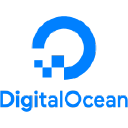Quitting My Cushy SDE Job To Build A Screenshot API [$2.2K MRR]
Hello! Who are you and what business did you start?
I am Dmytro Krasun, the founder behind ScreenshotOne—a simple API to turn any website URL into a screenshot.
People are often surprised that you can build a business out of automating screenshotting websites. But look who are my customers.
Owners of website galleries, copyright infringement software, cold email software, marketing software, and any other application that needs to render website screenshots. If you want to show screenshots of any website in your application, you know where to find me.
I have only started but already managed to grow my "little" software project to $2.2K MRR.

What's your backstory and how did you come up with the idea?
Before I started my current business, I was a pretty happy server-side developer for around 10 years with a...

Download the report and join our email newsletter packed with business ideas and money-making opportunities, backed by real-life case studies.

Download the report and join our email newsletter packed with business ideas and money-making opportunities, backed by real-life case studies.

Download the report and join our email newsletter packed with business ideas and money-making opportunities, backed by real-life case studies.

Download the report and join our email newsletter packed with business ideas and money-making opportunities, backed by real-life case studies.

Download the report and join our email newsletter packed with business ideas and money-making opportunities, backed by real-life case studies.

Download the report and join our email newsletter packed with business ideas and money-making opportunities, backed by real-life case studies.

Download the report and join our email newsletter packed with business ideas and money-making opportunities, backed by real-life case studies.

Download the report and join our email newsletter packed with business ideas and money-making opportunities, backed by real-life case studies.
























